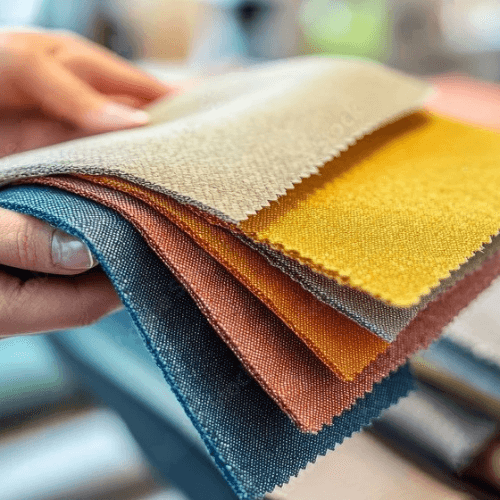A Deep Dive into the Most Popular Fabrics Exported from China

China has long been recognized as a global leader in textile production and export, dominating the market with an extensive range of fabrics. In 2024, the country continues to set trends and influence global textile dynamics, exporting a staggering $42 billion worth of textiles in the first half of the year alone. This blog takes a closer look at the most popular fabrics exported from China, examining their characteristics, applications, and the factors driving their demand in international markets.
### Overview of China’s Textile Exports
In recent years, China has solidified its position as the world’s largest exporter of textiles. In 2022, the country exported approximately $303 billion worth of textiles, with fabric accounting for a significant 80% of this total. The main destinations for these exports include major markets such as the United States, Japan, Vietnam, Germany, and Bangladesh. The strong performance of fabric exports highlights China’s ability to provide high-quality textiles at competitive prices while meeting diverse consumer needs.
### Key Fabrics Exported from China
#### 1. **Cotton**
Cotton remains one of the most widely used fabrics globally and is a cornerstone of China’s textile exports. Known for its softness, breathability, and versatility, cotton is used in various applications ranging from clothing to home textiles.
– **Export Statistics:** In 2023, cotton fabric exports accounted for a substantial portion of China’s total fabric exports. The country offers various qualities, including basic cotton and premium options like Supima cotton.
– **Market Demand:** The demand for cotton is driven by its popularity in casual wear and home furnishings. As consumers increasingly seek comfortable and breathable materials, cotton’s appeal continues to grow.
#### 2. **Polyester**
Polyester is another dominant fabric in China’s export portfolio. This synthetic fiber is known for its durability, wrinkle resistance, and affordability.
– **Export Statistics:** Polyester fabric exports have seen significant growth due to rising demand from fast fashion brands and manufacturers looking for cost-effective materials.
– **Market Demand:** The versatility of polyester allows it to be used in various applications, including clothing, upholstery, and industrial textiles. Its ability to mimic natural fibers while being more affordable makes it a popular choice among consumers.
#### 3. **Silk**
China is renowned for producing high-quality silk fabrics that are synonymous with luxury and elegance. The country’s silk industry is steeped in tradition and craftsmanship.
– **Export Statistics:** Silk exports have remained strong due to consistent demand from high-end fashion brands and luxury markets worldwide.
– **Market Demand:** Silk’s unique properties—such as its softness, luster, and drape—make it a favored choice for evening wear, formal attire, and premium home textiles.
#### 4. **Linen**
Linen is gaining popularity as a sustainable fabric option due to its natural properties and eco-friendliness. Made from flax fibers, linen is known for its breathability and durability.
– **Export Statistics:** As consumers become more environmentally conscious, linen exports from China have increased significantly.
– **Market Demand:** Linen’s lightweight nature makes it ideal for summer clothing and home goods like bed linens and tablecloths. Its rustic charm appeals to consumers seeking natural aesthetics.
#### 5. **Rayon**
Rayon is a semi-synthetic fiber made from wood pulp that combines the benefits of natural fibers with synthetic properties. It is known for its softness and drape.
– **Export Statistics:** Rayon fabric exports have grown as manufacturers look for alternatives to cotton that offer similar comfort levels.
– **Market Demand:** Rayon is popular in women’s clothing due to its fluidity and ability to take on vibrant colors during dyeing processes.
### Factors Driving Demand for Chinese Fabrics
Several factors contribute to the sustained demand for Chinese fabrics in global markets:
#### 1. **Competitive Pricing**
China’s established manufacturing infrastructure allows it to produce textiles at competitive prices without compromising quality. This pricing advantage attracts buyers from around the world who seek cost-effective solutions for their textile needs.
#### 2. **Diverse Product Range**
The extensive variety of fabrics produced in China caters to diverse consumer preferences across different markets. From luxurious silks to affordable polyester blends, Chinese manufacturers offer something for every segment of the market.
#### 3. **Innovation in Production Techniques**
Chinese textile manufacturers are continually investing in technology and innovation to enhance production efficiency and sustainability. Advances such as digital printing and eco-friendly dyeing processes are becoming more prevalent, enabling companies to meet modern consumer demands while reducing environmental impact.
#### 4. **Strong Trade Relationships**
China maintains robust trade relationships with numerous countries worldwide. The ability to adapt quickly to changing market conditions allows Chinese exporters to respond effectively to shifts in demand across different regions.
### Challenges Facing Chinese Fabric Exports
Despite its strong position in the global textile market, China faces several challenges:
#### 1. **Rising Production Costs**
Increasing labor costs and stricter environmental regulations are prompting manufacturers to reevaluate their production strategies. These rising costs could impact profit margins if not managed effectively.
#### 2. **Geopolitical Tensions**
Ongoing geopolitical tensions can disrupt trade flows and create uncertainty in international markets. Manufacturers must remain vigilant about potential changes in trade policies that could affect their export capabilities.
#### 3. **Sustainability Pressures**
As sustainability becomes a key focus for consumers worldwide, Chinese manufacturers are under pressure to adopt more eco-friendly practices throughout their supply chains. Meeting these expectations will be crucial for maintaining competitiveness in an evolving market landscape.
### Conclusion
China’s dominance in the global textile market remains unchallenged as it continues to export a diverse range of popular fabrics that cater to varying consumer needs across different regions. From cotton and polyester to silk and linen, each fabric plays a vital role in shaping global fashion trends and consumer preferences.
As we move through 2024, understanding these fabrics’ characteristics, applications, and market dynamics will be essential for businesses looking to capitalize on opportunities within this thriving industry. By staying informed about trends and challenges within the textile sector, companies can better navigate the complexities of international trade while ensuring they remain competitive in an ever-evolving marketplace.






